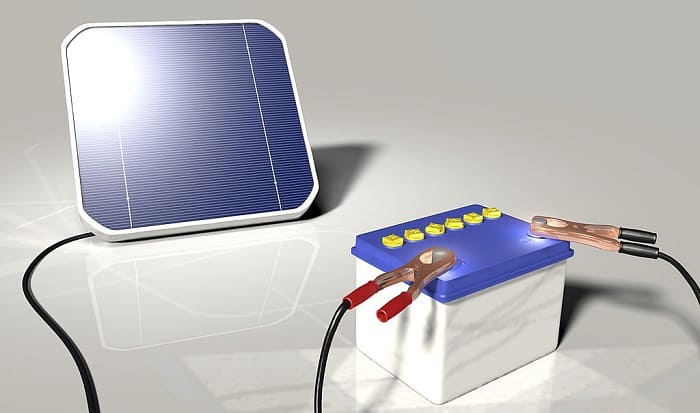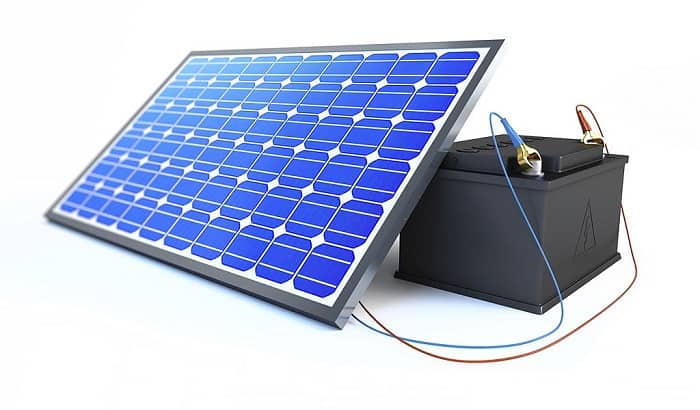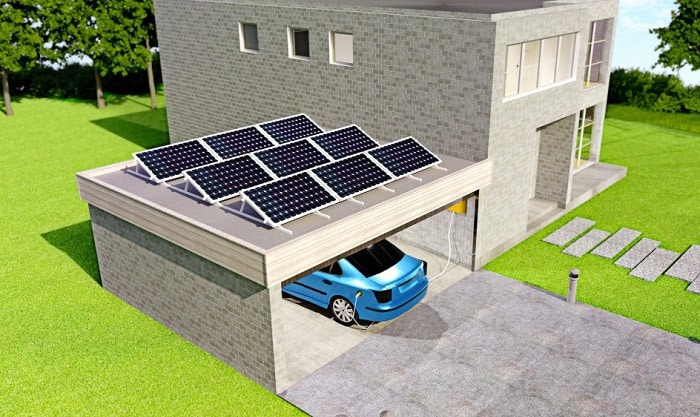Charging your batteries using solar panels is an excellent method of utilizing clean, green, and renewable energy. However, how to charge a battery with a solar panel? Before you begin, you have to set up a charge regulator, which is for controlling the voltage from the panel that’s transmitted to the battery.
Without a regulator, on sunny days, the solar panel might generate more energy than your battery could manage, and this could cause damage to your battery. Fortunately, this is a straightforward approach that would have you charging your batteries quickly.
We’ll continue discussing the proper steps in using solar panel to charge battery in this post. So, let’s begin!
Table of Contents
- Detailed Steps in Connecting a Charge Regulator to a Battery and Solar Panel
- How Long Does It Take to Charge a 12-volt Battery With a Solar Panel?
- What Is the Required Solar Panel Size to Charge a 12-volt Battery?
- The Correct Way of Solar Panel Charging Car Battery
- The Stages Involved in Using a Solar Panel to Charge Car Battery
- How to utilize a solar panel to charge a lead-acid battery?
- The Bottom Line
Detailed Steps in Connecting a Charge Regulator to a Battery and Solar Panel
As mentioned, rather than attaching your battery directly to your solar panel, it’s fundamental to set up a charge controller between your solar panel and battery.
Materials and Tools Needed:
- Battery charge
- Solar panel
- Inverter (required if you’ll utilize AC powered devices)
- Charge regulator
- Connectors, wires, and cable (usually contained in your solar panel kit)
- Screwdriver
- Wire cutter
- Drill
- 12V deep cycle battery
- Electrical tape
- Crescent wrench
- Goggles (for eye protection)
Here are the things to do:
Step 1: Ready all the materials and tools required.
Install the solar panel so that you could connect it to the primary connector later on. Arrange the panel first to know if an extension is necessary or not, as this will depend on the setup.
Make sure that you cover the wires for additional protection. Do this first if the battery isn’t charged yet. It’s crucial to charge the battery before you install the panels to save time.
Then, see to it that the battery’s negative terminal is on one side, and the positive terminal is on the other side. You can continue to step 3 if your battery is already parallel.
Otherwise, you will need to cut your cables and create a few jumpers. Basically, it goes like this: the larger the inverter, the longer the cable.
Step 2: Attach the charge regulator into the lead battery.
There must be a wire on the charge regulator where you could clamp or attach the battery. You must switch off the inverter first; if the regulator is waterproof, you could put it anywhere; if not, ensure that you position it in a safe spot.
Step 3: Connect the lead battery to your inverter.
You can configure the battery as parallel to the other batteries in your solar system. Connect the batteries with cables when adding more of them. It’s essential that you link the cables to the correct terminals.
Make sure your inverter can charge numerous parallel batteries at once.
Step 4: Hook up the battery regulator to the solar panel.
Finally, you may run the line from the solar panel to the charge regulator to set it. An extension cord might be necessary to hook up the components, depending on your setup.
To learn more about connecting a charge regulator with a solar panel and battery, you might want to check out this video:
How Long Does It Take to Charge a 12-volt Battery With a Solar Panel?
Depending on the size of your battery, it’d require approximately five to eight hours to fully charge car battery with solar panel that could generate 1 amp of current.
In addition, if you want to ensure a more effective charge, be sure that the solar panel is free from any obstruction and is positioned directly facing the sun.
Please note that charging time usually varies depending on the amp output and size of your panel. A large-sized panel could charge a car battery more quickly than a solar charger with a small-sized panel.
What Is the Required Solar Panel Size to Charge a 12-volt Battery?
A solar-powered car battery charger can commonly produce 13.6 volts up to 17.0 volts, depending on the model you pick. It is purposely designed to charge standard vehicle batteries and could run any 12V gadgets.
Solar chargers are ideal for small cabins, cars, recreational vehicles, and boats. Interestingly, some models come with a converter that is meant for charging smart devices. They are valuable investments for portable off-grid systems.
A regular solar panel measures 65×39-inches, and is utilized to charge a 12-volt 100W battery. On the other hand, the commercial solar panel measures 77×39-inches.
The Correct Way of Solar Panel Charging Car Battery
If you’re going for a DIY approach, ensure that your charging system has a charge regulator to control the voltage.
When using a solar charge regulator, you could attach one end of the controller to the battery. From there, you can attach the other end with your solar panel.
Such a method significantly aids in regulating the voltage so that your battery won’t exceed the safety limit. The charge regulator tracks the voltage of the battery, a process known as pulse width modulation.
Using a charge regulator can help keep the battery from going beyond the target limit or the safe float voltage. Luckily, it’s safe to leave this type of setup attached continually without worrying about the potentiality of battery damage.
The Stages Involved in Using a Solar Panel to Charge Car Battery
The four primary steps involved in charging a battery using a solar panel are as follows:
Stage 1: Bulk Phase
This is mainly the first phase of charging your battery using the energy from the sun. It begins when the sun shines or when you switch on the generator.
This stage will begin when your battery reaches a low-charge phase. This occurs when the charge is below 80 percent.
It is in this phase that the panel puts as many amps as probable into the battery cells. Moreover, the voltage in your batteries increases slowly as they take in the electricity.
Stage 2: Absorb Phase
This phase occurs when the charge level is between 80 to 90 percent.
Or, it emerges when your batteries reach a charge amounting to 14.4 up to 14.8 volts. Chiefly, when your batteries reach this charge percentage, it goes into the absorb phase, which generally relies on the charge rate. Fundamentally, the above charge rate is for lead-acid batteries.
This phase ends once the number of amps going in your batteries reaches a particular number that’s pre-set, or a predetermined time period elapses.
Stage 3: Float Phase
This phase commences when the charge regulator lessens the voltage to a particular pre-set value. It is accomplished when your batteries obtain a charge level of 100 percent.
You must be knowledgeable of how to program your charge regulator.
Stage 4: Equalization Phase
This phase refers to a regulated overcharge phase, which is accomplished regularly.
Equalization helps maintain lead acid batteries, whose capacity declines due to sulfation.
How to utilize a solar panel to charge a lead-acid battery?
The first thing you have to do is to invest in a premium quality solar panel and voltmeter. See to it that you choose a solar panel with the standard size.
When you attach the solar panel to your battery, see when the voltage reaches roughly 14-volt; this implies that your battery is fully charged.
Remove the connection when your battery is already fully charged. This is to impede charging the battery too fast or overcharging it. It’s vital that you carefully check your battery’s user manual to unveil the number of amps your battery can handle.
Meanwhile, if you are acquainted with trickle charging, keep in mind that there are a few solar chargers specifically engineered to sustain your battery’s charge level.
Such solar chargers don’t generate excessive voltage to impair your battery. For this reason, it is practical to get a trickle charger if you keep your car idle for an extended time.
The Bottom Line
You learned from this post the detailed steps on how to charge a battery with a solar panel. Rather than directly charging the battery with a solar panel, it’s best if you use a charge regulator to ensure safety. This way, you can extend the lifetime and performance of your battery.
So long as the materials and tools required when charging your battery with a solar panel are prepared and you carefully follow the guides shared here, you’re good to go. Hopefully, you can enjoy the perks of solar energy just as much as we do. Please feel free to share this article if you find it useful.

I am Kathleen Miller, staff writer and reviewer of the Avasolar team. Working with the team has been a pleasure for me so far, I hope to bring readers useful information by creating detailed and easy-to-follow contents.



